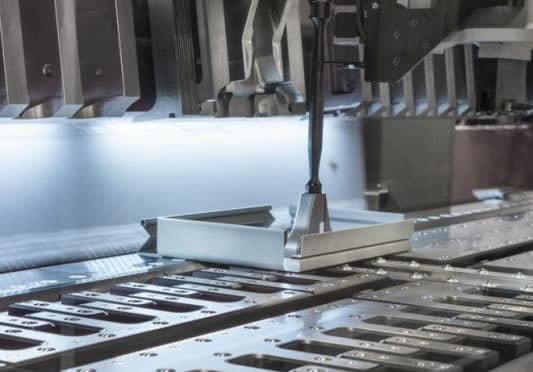
To get started in CNC, you must understand the CNC Basics. This guide will help you find top CNC tutorials suitable for beginners.
We’ll guide you on the critical concepts you need to learn and the sequence to follow. An excellent roadmap that segments the CNC Basics into easy-to-understand tutorials is unbeatable,
as it enables any novice to quickly grasp the concepts.
Table of Contents
CNC Basics: Big Picture & Concepts
cnc basics tutorial beginners learn
Personally, I always start with the big picture and basic concepts. They’re the foundation for deeper understanding, and the give you that all-important overview of how the big pieces go together in the puzzle. Once you’ve got the CNC Basics down, you can drill down and learn cnc in bite-sized chunks.
This Big Picture View will seem pretty normal if you’re planning to make your living in the CNC Manufacturing world. But, for many hobbyists, they want to jump in and buy or build a CNC machine right away.
Here’s the thing–learn the CNC Basics first before you try to acquire a machine. Understanding these CNC basics will help you understand your potential new machine’s specs and documentation. They’ll help you understand what people on forums (great learning resources!) are talking about. This can potentially save you money and frustration. Once you’ve got at least an overview of the basics, move on to researching how much cnc machines cost.
Here’s the Big Picture to help you get your arms around those CNC basics fast.
Big Picture: Step-By-Step Guide to Making CNC Parts
There are 9 steps to make a CNC part described below. Click on the title of any to drill down and see details for each step.
1 Design Idealized Part
Deliverable: Create an Idealized CAD Model of the Part
design part cad software
Design the part in the CAD software based on sketches, photos, specifications, and any other ideas we have for the part. The part is “Idealized” because we haven’t done any serious homework yet to evaluate how easy it will be to manufacture the part. Experienced Designers will have avoided many manufacturing problems at this stage while Beginners will discover they need to change quite a bit to make the part easy to manufacture.
2 Modify Design for Manufacturing Needs
Deliverable: Finished CAD Model + Setup Sheet Outline that is a plan for how to manufacture the part
80% of the cost to manufacture a product is determined at Design Time…
In this step, we will evaluate how easy it is to manufacture our part, change the design as desired to make it easier to manufacture, and arrive at a plan for how to manufacture the part which we’ll capture in our Setup Sheet Outline.
3 CNC Programming
Deliverable: G-Code Part Program + Finished Setup Sheet
Using MeshCAM to create a G-Code Part Program…
Armed with a CAD model and our Setup Sheet Outline, we’re ready to dive into CAM, Conversational Programming, Hand Coding, or whatever method we want to use to create a G-Code Part Program.
4 Machine Setup
Deliverable: CNC Machine is Setup to Run the Part
Setup is where we get the CNC Machines all ready to run the part. We need to make sure it has all the right tools in the tool changer, the right gcode program loaded, and in general that the machine is ready to go.
5 Program Proofing
Deliverable: Program is Proven, Ready to Run the Part
cnc program proofing and simulation
Proofing the program is the last step before we actually make real cuts. The goal of proofing is to verify the program is correct and the CNC machine is setup correctly so that there will be no problems when the g-code is run for the first time. Proofing can be done either by Cutting Air (simple but very time consuming) or by using a CNC Simulator (also called a G-Code Simulator).
Click the section title to drill down and see which is better.
6 Machine the Part
Deliverable: CNC’d Parts
After all the preparation, we’re finally ready to make some chips and machine a CNC part.
7 Manufacturer Quality Control and Part Inspection
Deliverable: Inspected Parts, Ready for Finishing
Having finished the CNC machining, it’s time for Quality Control. We’ll inspect the parts to make sure they meet the desired specifications, tolerances, and surface finishes. But first, most parts will need deburring. See our article on Deburring Tools for Metal to learn more.
8 Finishing
Deliverable: Part is Finished!
Our last step involves finishing the parts. It’s optional, as our parts may not require it. But, there are many forms of finishing possible ranging from paint, to anodizing, to bead blasting, and more.
CNC Basics: The CNC Software Stack
Now you’ve got the Big Picture for How CNC Parts are Made. Cool beans! That’s an awesome framework to help file away future CNC learnings and concepts.
Let’s get another framework in place: The CNC Software Stack.
By “CNC Software Stack” I mean, “What are the different CNC Software packages used and how do they fit together?”
There’s a fair amount of different software that is involved when making a part with CNC. At the very least that includes a CAD program with CAM (or perhaps Conversational CNC instead of CADCAM, but let’s start with CAM as a newbie) to generate the g-code, and your machine controller, which turns that g-code into machine motions that make your part for you. There’s a lot of other software out there that you’ll hear about and wonder about. It’s helpful to get a mile-wide-but-inch-deep overview of what all that software does and how it fits together. You won’t need all of it to get started, but it’s still worth understanding it because it’ll help you understand a lot more about the workflows going from a design concept to a finished part at the software level.
